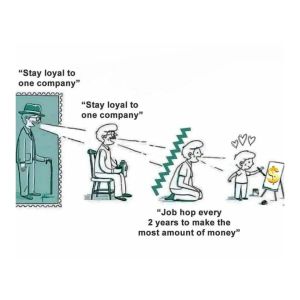Loyalty
Loyalty is a Dog game, Catboys don't do that.
Company Loyalty

In an era marked by rapid economic change and increased job mobility, the concept of company loyalty is undergoing a fundamental transformation. Once a cornerstone of the traditional workplace, unwavering allegiance to an employer is increasingly becoming a relic of the past.
Sometimes it's not just about the salary increase. If trust and respect have been damaged over time, a pay raise can't fix that.
The recent trend of employees seeking greener pastures, often precipitated by stagnant wages, underscores the changing dynamics of the employer-employee relationship. The narrative of the dedicated worker who toils tirelessly for the company, expecting loyalty in return, is being replaced by a more pragmatic approach.
While companies often tout the benefits of a strong company culture and opportunities for growth, the bottom line remains a primary motivator for employees. When faced with stagnant wages and a lack of recognition, even the most loyal workers may reconsider their commitment.
It is essential for organizations to recognize that employee loyalty is not a given but rather an outcome of fair treatment, competitive compensation, and opportunities for advancement. A failure to invest in employees can lead to high turnover rates, decreased morale, and a decline in productivity.
In today's job market, employees are more empowered than ever to prioritize their own well-being and career progression. While companies may seek to cultivate a sense of loyalty, it is equally important to foster an environment of mutual respect and appreciation. By offering competitive compensation, opportunities for growth, and a positive work culture, organizations can increase employee retention and build a stronger workforce.
Ultimately, the relationship between employer and employee is a two-way street. While employees owe a certain degree of commitment to their roles, companies must also recognize their obligations to their workforce. By prioritizing employee satisfaction and well-being, organizations can create a more stable and productive work environment.